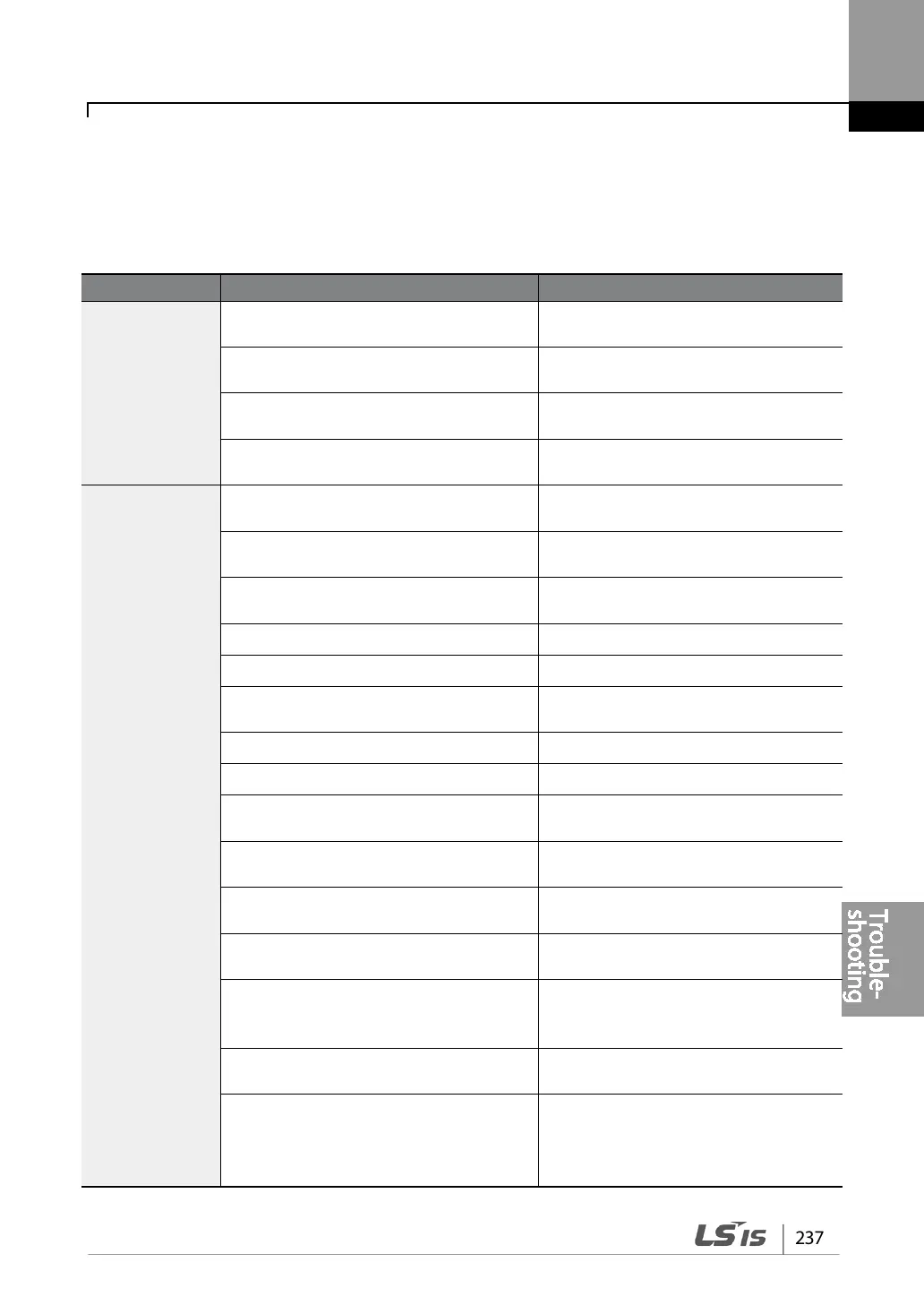7.3 Troubleshooting Other Faults
When a fault other than those identified as fault trips or warnings occurs, refer to the following
table for possible causes and remedies.
Type Cause Remedy
Parameters
cannot be set.
The inverter is in operation (driving
mode).
Stop the inverter to change to program
mode and set the parameter.
The parameter access is incorrect.
Check the correct parameter access
level and set the parameter.
The password is incorrect.
Check the password, disable the
parameter lock and set the parameter.
Low voltage is detected.
Check the power input to resolve the
low voltage and set the parameter.
The motor does
not rotate.
The frequency command source is set
incorrectly.
Check the frequency command source
setting.
The operation command source is set
incorrectly.
Check the operation command source
setting.
Power is not supplied to the terminal
R/S/T.
Check the terminal connections R/S/T
and U/V/W.
The charge lamp is turned off. Turn on the inverter.
The operation command is off. Turn on the operation command (RUN).
The motor is locked.
Unlock the motor or lower the load
level.
The load is too high. Operate the motor independently.
An emergency stop signal is input. Reset the emergency stop signal.
The wiring for the control circuit terminal
is incorrect.
Check the wiring for the control circuit
terminal.
The input option for the frequency
command is incorrect.
Check the input option for the
frequency command.
The input voltage or current for the
frequency command is incorrect.
Check the input voltage or current for
the frequency command.
The PNP/NPN mode is selected
incorrectly.
Check the PNP/NPN mode setting.
The frequency command value is too low.
Check the frequency command and
input a value above the minimum
The [STOP/RESET] key is pressed.
Check that the stoppage is normal, if so
resume operation normally.
Motor torque is too low.
Change the operation modes (V/F, IM,
and Sensorless). If the fault remains,
replace the inverter with a model with

